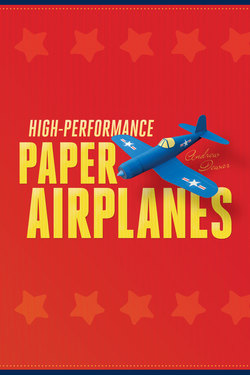Читать книгу High-Performance Paper Airplanes - Andrew Dewar - Страница 5
На сайте Литреса книга снята с продажи.
ОглавлениеTools & Techniques
Using a ruler
Use a ruler when you fold the paper. This will give you crisp, straight creases without weakening the paper.
“Training” the paper to bend
Where the paper is curved, gently bend it with your fingers to “train” it before gluing. This will preserve its spring and prevent buckling and creasing.
Using a toothpick to roll the ballast
Use a toothpick to help you roll up ballast. Roll the paper tightly around the toothpick, fasten the very end with a drop of glue, and pull out the toothpick.
A guide to symbols used
Use a knife to cut parts loose
You can push out the larger parts with your fingers, but the paper will be less likely to crease or tear if you use a craft knife to cut them loose. Cut slits carefully with scissors.
Trim away the flashing
Carefully trim the flash from around the edges of parts you have pushed out. This will make them look cleaner and fit together better.
Don’t worry if you accidentally tear the paper or cut the wrong thing. In most cases you can patch up the cut from the inside with a small scrap of paper. Butt the two edges together, and glue the patch behind it, or between two parts. If the patch is small, it won’t affect the balance.
Using a toothpick to spread the glue
Use a toothpick to spread a drop of glue evenly over the whole surface to be glued. Very little is needed; in fact, a transparent film sticks much better than a thick layer. A little glue will make strong, clean joints. Too much glue will warp the paper and ooze out at the edges, and make your plane look messy and grimy. Messy, warped planes don’t fly very well. I recommend that you practice with scraps of paper before gluing actual parts.
Stapling layers of paper
Hold the layers of paper tightly when stapling, and use the marks as guides. But don’t push too hard or too suddenly when stapling, or the staple will bend. Just depress with the usual force and the staple will punch right through all the paper.
Bending small part
Use a toothpick to help bend small parts like the spinners. Tweezers are great for holding smallish parts and firmly pressing glue tabs together.
Gluing the fuselage pieces
Most of the noses and cylindrical parts use a separate glue flap, which is glued in place half at a time. After the first half has set a bit, but still bends, spread glue on the remaining portion, and close the cylinder with the edges butting together exactly. Reshape the curve before it dries.
When gluing together the fuselage, whether round or triangular, align the sides carefully to avoid twisting. Test the fit before actually gluing it. And after gluing, check again by looking at the part from behind. If it is twisted, carefully pry apart the seam and reglue it.
Tips for applying glue (1)
Make a thin ribbon of glue by applying a bead to the seam.
Spread it with your finger or a toothpick. Be sure to clean your fingers right away!
The finished plane will look much nicer if you wipe away excess glue. A scrap of paper works well.
Tips for applying glue (2)
For parts without glue tabs, put a thin bead of glue around the inside edge, and hold them in place gently until the glue grips.
